Which kitchen sink to choose? Buying guide
Whether it's for cooking or washing dishes, the kitchen sink is one of the parts of the kitchen that we use most frequently in our daily lives and rarely change in a home. That's why we need to be careful in choosing it, because it accompanies us for a lifetime! You need a sink that is practical, durable, beautiful, and economical.
What characteristics should you pay attention to in a kitchen sink?
Construction Material
One of the most popular categories is the standard silver [stainless steel][1]. They are durable and relatively economical, but they need regular cleaning to prevent salt build-up. They are also heat-resistant, so you can comfortably place a hot pot on them without any worries. They come in various finishes, from the most polished to the most matte, such as satin, brushed, or matte.
![enter image description here][2]
There is also a high demand in the market for sinks made of [synthetic granite][3]. The main ingredient is granite, while the additional materials can be acrylic resin, calcium carbonate, etc. The type and proportion of materials affect the quality of the final product and, of course, the price. Sinks with a high granite content excel in hardness compared to stainless steel sinks, so they are not scratched or corroded by cleaning chemicals, but they are not equally resistant to high temperatures. They come in various colors and have a smooth texture, making them easy to clean.
![enter image description here][4]
Less known in the Greek market are sinks made of [porcelain][5]. They are excellent in terms of hygiene and ease of cleaning, but they are less resistant to impacts and high temperatures.
![enter image description here][6]
Installation Type
The most classic type of sink based on its installation method is the [inset][7] sink. They are applied to the specially designed space in the kitchen countertop and have a lip around them that rests on the countertop. They offer the easiest and most economical installation, but the lip makes it a bit difficult to clean the countertop, as it does not allow water and debris generated during cooking to be easily pushed into the sink.
![enter image description here][8]
In some cases where the height of this lip is very low, the countertop and sink are almost at the same height, so this problem is reduced. These sinks are called [flush-mount][9].
![enter image description here][10]
A more modern solution for your kitchen is the [undermount][11] sink, as it does not protrude at all from the countertop and remains relatively hidden. In this case, the sink is installed under the countertop hole, and its support is more difficult, so it can be combined with a countertop made of solid material (while common countertops are made of MDF or melamine). However, they are easier to use because they do not have a lip.
![enter image description here][12]
Less common in their selection and with less variety are the [drop-in][13] sinks, which are supported by the countertop but not on the lip and often leave their front part visible. Again, there is no lip like the undermount sinks, and they require a combination with a solid material countertop.
![enter image description here][14]
Dimensions
An important factor in choosing a kitchen sink is its size, especially when replacing an existing installation.
If you choose an inset sink, the length and width of the sink are measured from edge to edge of the outer part of the sink lip and in the middle of the sink. You should make sure that these dimensions are sufficient to cover the hole left by the removal of the previous sink and slightly larger to support the lip on the countertop. If the hole is too small to accommodate the sink, you can always enlarge it slightly, but be careful not to exceed the limits of the cabinet located under the sink.
If you choose an undermount sink, then you don't need to worry about the dimensions of the lip, as there isn't one. Just make sure to get a sink with dimensions larger than the hole in the countertop but smaller than the dimensions of the cabinet under the sink.
Skroutz tip: In addition to the spaces with depth, i.e. the bowls, the sink may also have flat drainage spaces for dishes (one, on one side, or rarely two, right and left of the sink) called [aprons][15]. In that case, the total length of the sink will include the length of these.
- If you choose an inset sink, you don't need to take into account the length of the aprons when calculating the size of the sink in relation to the hole in the countertop and the cabinet, as the aprons extend over the countertop and do not affect the technical installation.
- However, if you choose an undermount sink, then the total length (bowls and aprons) must be larger than the hole and smaller than the cabinet.
What to choose?
The simplest solution is to buy a stainless steel sink, especially if economy is an important criterion for you. However, if you want something more aesthetically pleasing and durable, a sink made of high-quality composite granite is a better choice. As for installation, the easy way is with an inset sink, while for those who love minimalist style, an undermount sink is recommended. In any case, pay attention to the dimensions of the sink to make sure it can be installed without any problems in your space. Start your research from [here][16]! And since you're renovating, if you want to change the faucet of your sink, learn all the secrets about [kitchen faucets][17].
<!DOCTYPE html>
Kitchen Sinks Guide
Here are some options for kitchen sinks:
1. Inox Sink

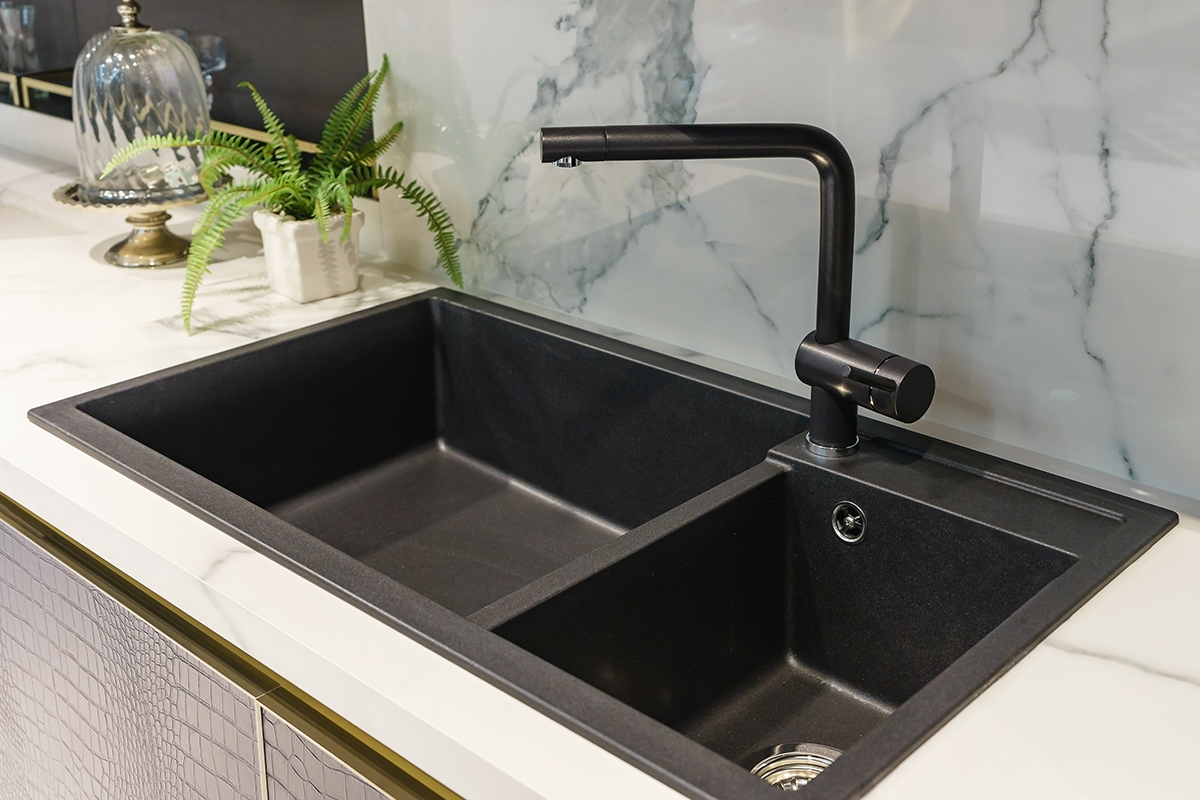

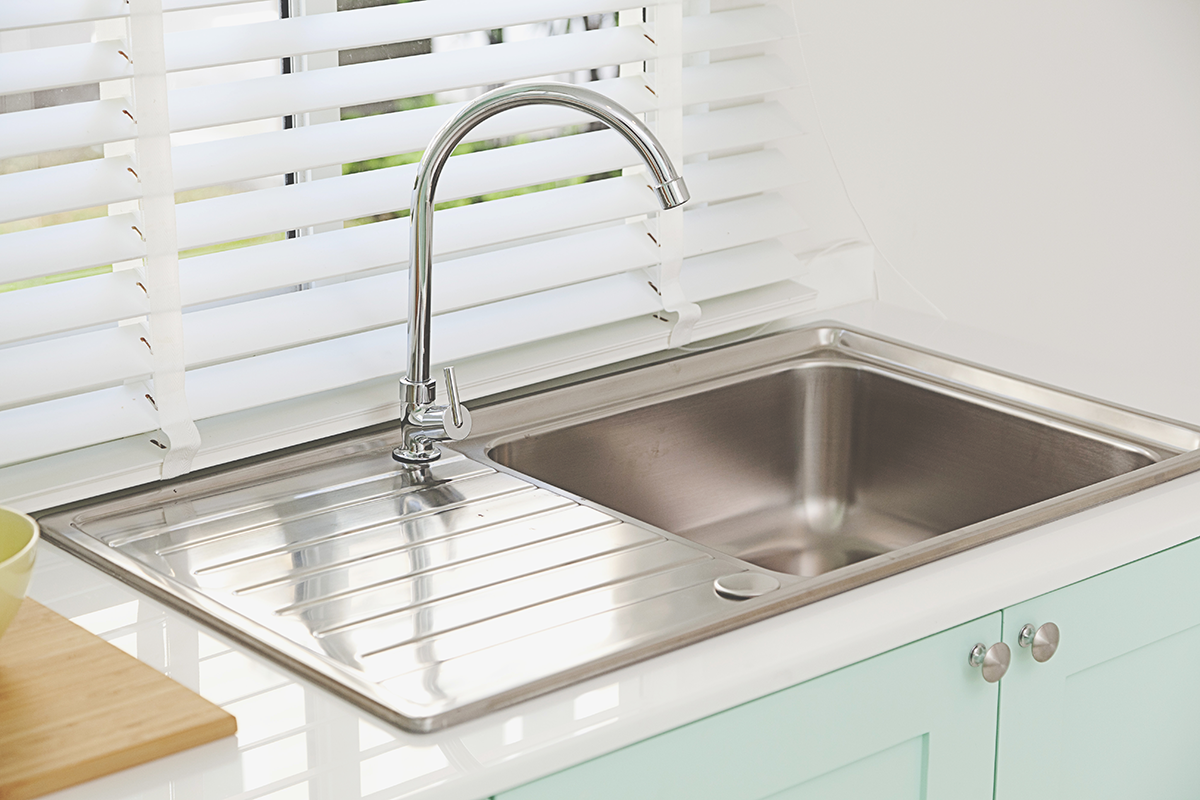
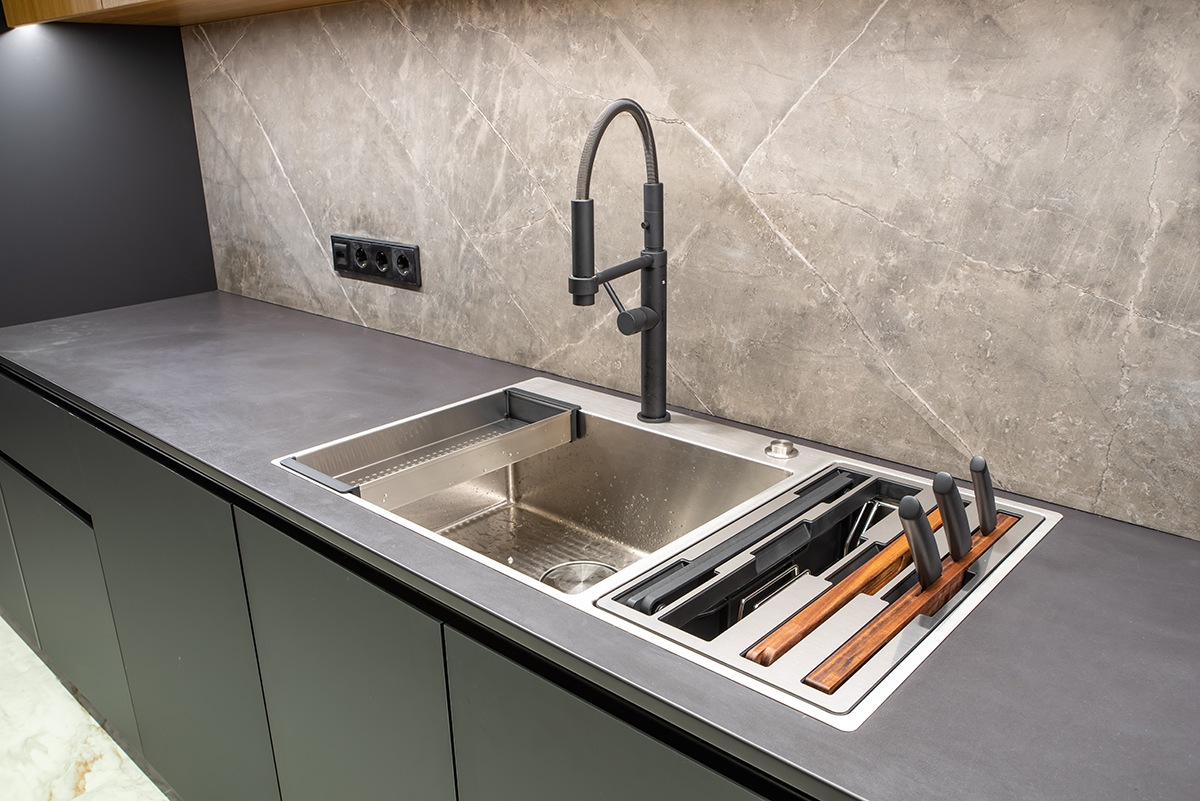
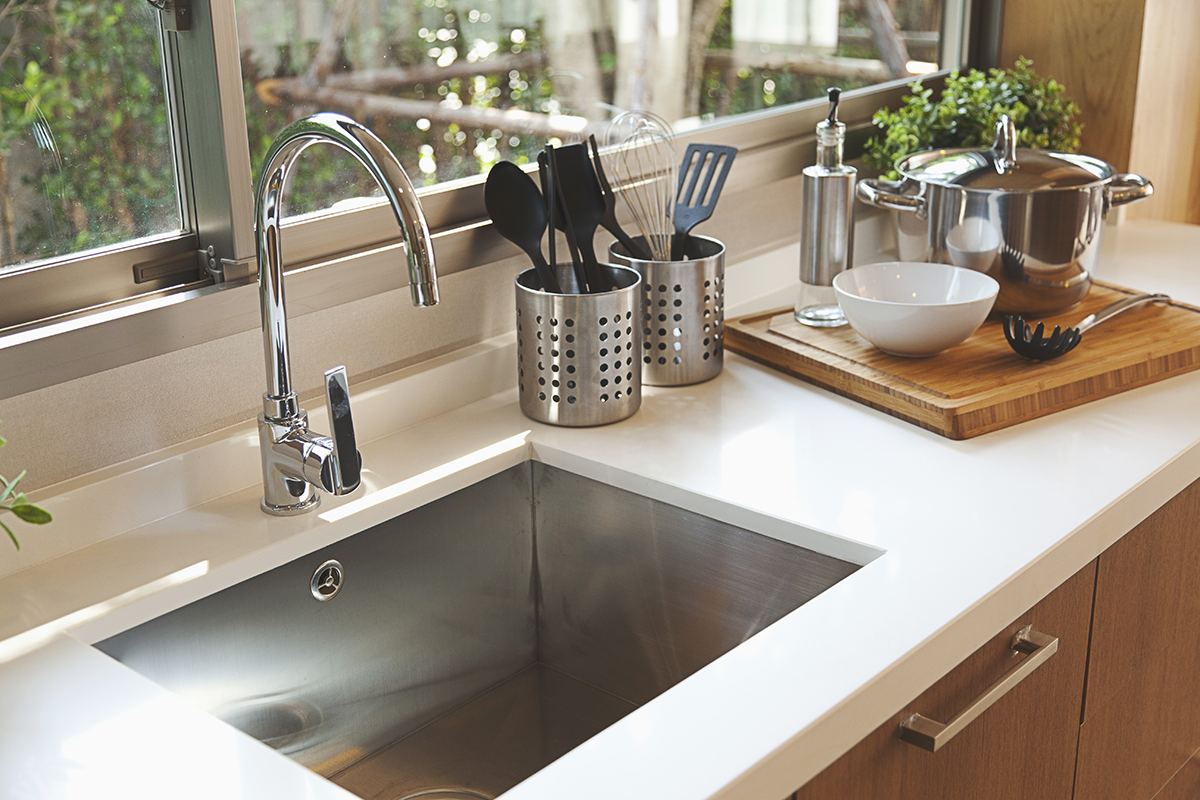
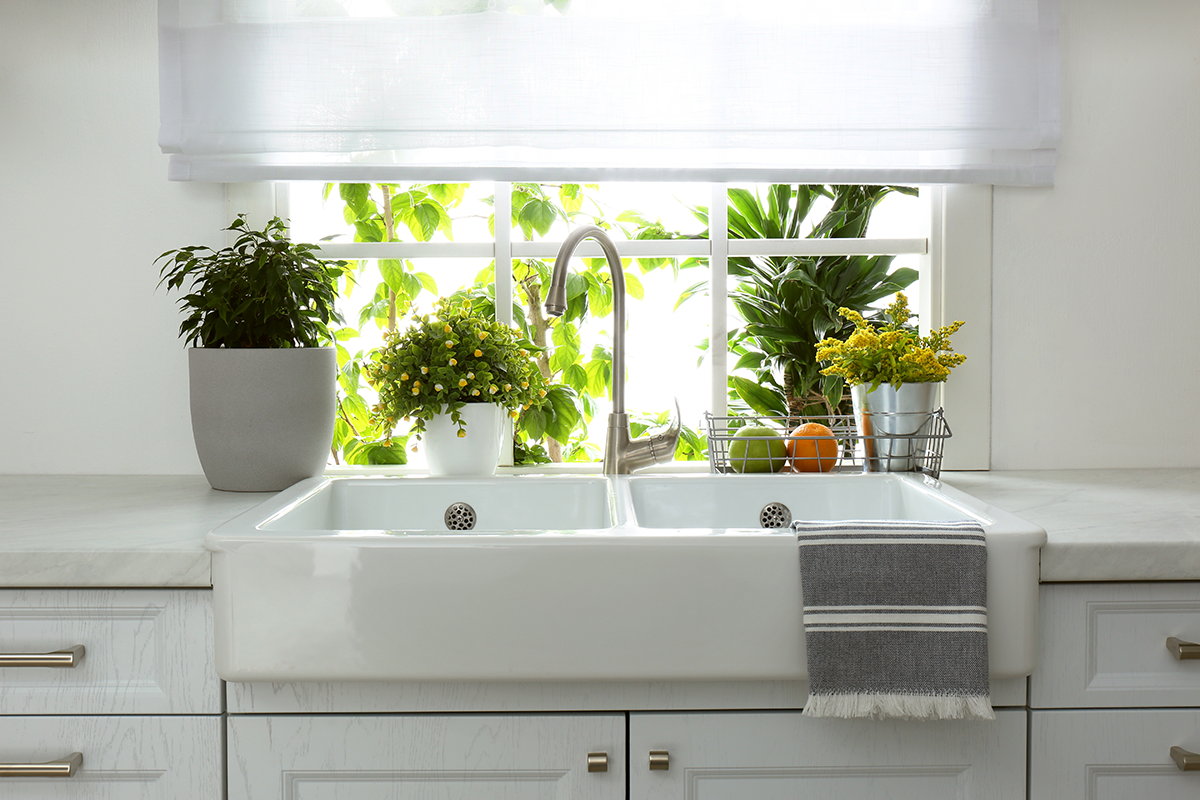
For more kitchen sink options, visit the Kitchen Sinks









